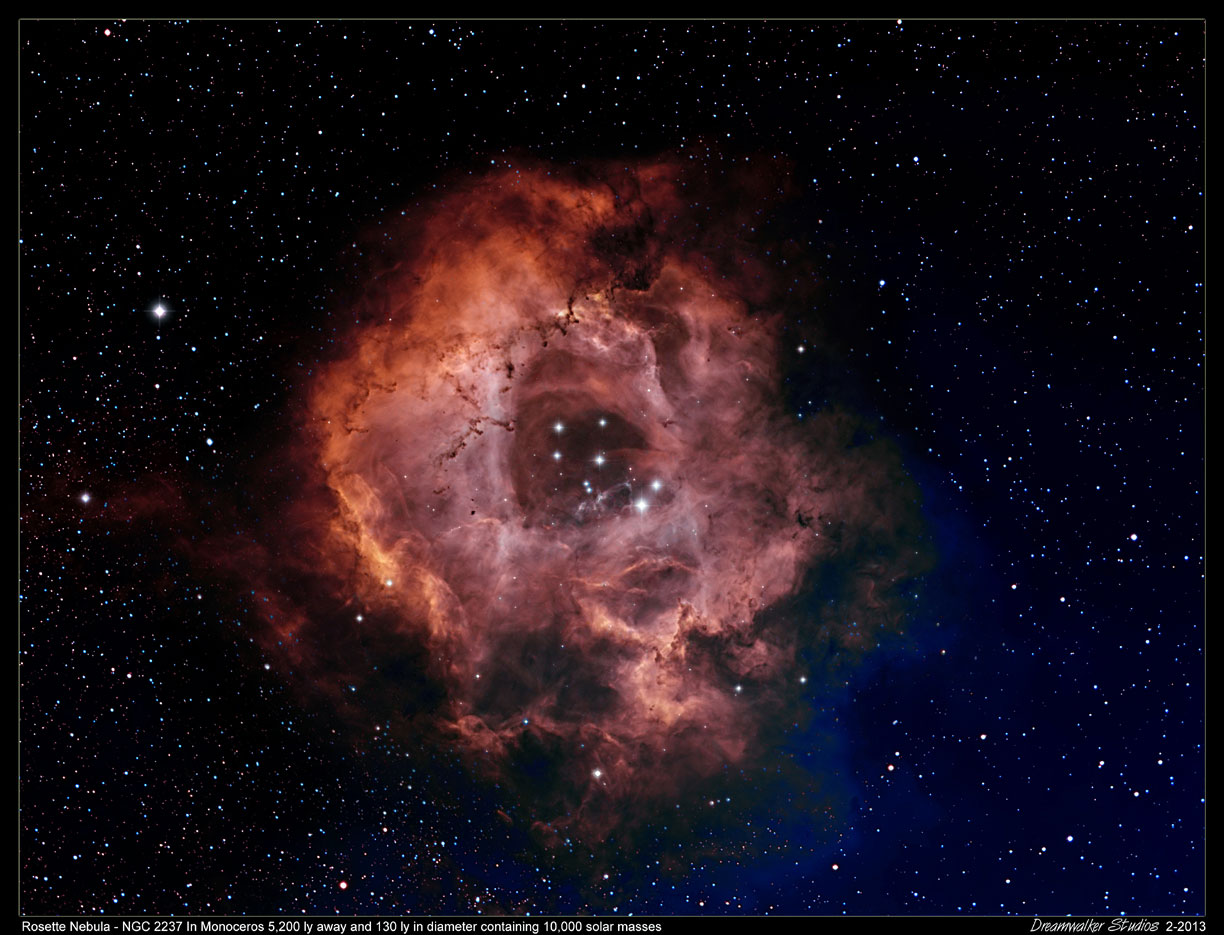

Imaged by Richard Walker (Dakota Starry Nights / YouTube), member of Black Hills Astronomical Society, Rapid City, SD - January/February 2013
The Rosette Nebula is a large, circular H II region located near one end of a giant molecular cloud in the Monoceros region of the Milky Way Galaxy.
NGC 2244 is the open cluster at the center of Rosette Nebula. This cluster has several O-type stars, super hot stars that generate large amounts of radiation and stellar wind. The cluster and nebula lie at a distance of some 5,200 light-years from Earth and measure roughly 130 light years in diameter. The radiation from the young stars excite the atoms in the nebula, causing them to emit radiation themselves producing the emission nebula we see. The mass of the nebula is estimated to be around 10,000 solar masses.
Image
Technical Details:
Mount: Losmandy G11 Gemini 2
Polar Alignment Software: Align Master and Gemini 2
Target Acquisition Software: SkyTools
Imaging Scope:
Image Acquisition Software: Nebulosity v3
Guide Scope: Vixen 70mm f/12.9 (fl: 900mm)
Imaging
Camera:
Guide Camera: Starlight Xpress Lodestar Autoguider
Guide Software: Stark Labs PHD
Image Scale: 2.75 arcsec/pix
Field of view: 114.7 x 153.3 arcmin (Approx. 2° x 2.5° )
Image Integration Time:
Image Acquisition Date: Jan. 5, 9 and Feb. 2, 2013
Image Calibration Software: Nebulosity v3
Image Color Mapping and Processing: Photoshop 7.0
Color Assignment: Hubble Palette,
Narrowband Filters: Baader 36mm
Back to SD Space Grant Consortium Homepage